-
 bitcoin
bitcoin $102877.190955 USD
1.88% -
 ethereum
ethereum $3430.435064 USD
4.52% -
 tether
tether $0.999264 USD
-0.05% -
 xrp
xrp $2.307310 USD
4.49% -
 bnb
bnb $987.740692 USD
3.82% -
 solana
solana $161.947760 USD
3.97% -
 usd-coin
usd-coin $0.999712 USD
-0.05% -
 tron
tron $0.292810 USD
2.93% -
 dogecoin
dogecoin $0.179738 USD
10.70% -
 cardano
cardano $0.580716 USD
8.75% -
 hyperliquid
hyperliquid $42.463448 USD
8.40% -
 chainlink
chainlink $15.763437 USD
7.05% -
 zcash
zcash $649.595636 USD
17.21% -
 bitcoin-cash
bitcoin-cash $511.610261 USD
7.19% -
 stellar
stellar $0.292537 USD
7.91%
How to use RSI in a volatile market? How to avoid frequent false signals?
In volatile crypto markets, using RSI with adjusted settings and other indicators can help traders identify genuine signals and make informed decisions.
May 22, 2025 at 01:49 pm
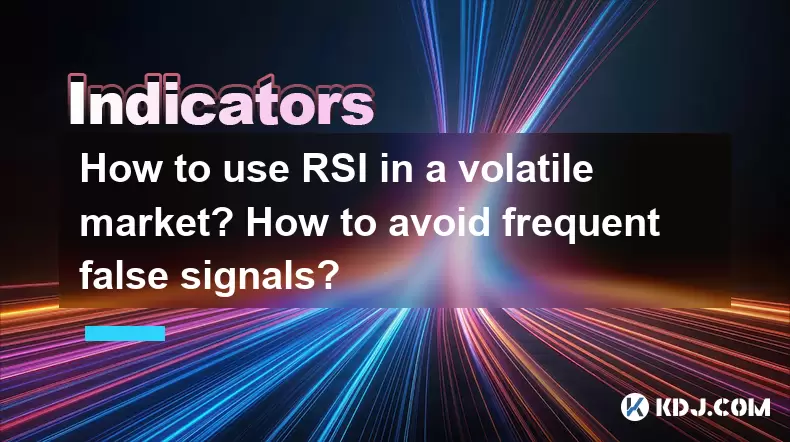
Using the Relative Strength Index (RSI) in a volatile market can be a challenging yet rewarding strategy for cryptocurrency traders. The RSI is a momentum oscillator that measures the speed and change of price movements, typically on a scale from 0 to 100. In a volatile market, the RSI can help traders identify potential overbought or oversold conditions, which are crucial for making informed trading decisions. However, the challenge lies in distinguishing between genuine signals and false ones, which are more frequent in volatile markets.
Understanding RSI Basics
The Relative Strength Index (RSI) is calculated using the average gain and loss of an asset over a specified period, usually 14 days. The formula for RSI is:
[ \text{RSI} = 100 - \frac{100}{1 + \text{RS}} ]
where RS (Relative Strength) is the average gain of up periods during the specified time frame divided by the average loss of down periods. An RSI value above 70 typically indicates that an asset is overbought, while a value below 30 suggests it is oversold. In volatile markets, these thresholds can be adjusted to better suit the market conditions.
Adjusting RSI Settings for Volatility
To effectively use RSI in a volatile market, adjusting the standard settings can be beneficial. Instead of the default 14-day period, consider using a shorter period, such as 7 or 9 days, to make the indicator more sensitive to recent price movements. Additionally, you might need to adjust the overbought and oversold thresholds. For instance, in a highly volatile market, setting the overbought level to 80 and the oversold level to 20 can help filter out false signals.
Combining RSI with Other Indicators
Using RSI alone in a volatile market can lead to numerous false signals. To mitigate this, combine RSI with other technical indicators such as the Moving Average Convergence Divergence (MACD), Bollinger Bands, or the Average True Range (ATR). For example, a bullish RSI divergence (where the price makes a lower low but the RSI makes a higher low) combined with a bullish MACD crossover can provide a more reliable signal.
Implementing RSI in Trading Strategies
To incorporate RSI into your trading strategy in a volatile market, follow these steps:
- Identify the Market Trend: Before applying RSI, determine the overall trend of the market using tools like moving averages. This helps in understanding whether the market is in an uptrend, downtrend, or sideways movement.
- Set RSI Parameters: Adjust the RSI settings based on the market's volatility. Use a shorter period and potentially different overbought/oversold levels.
- Look for Divergences: Pay close attention to divergences between the price and the RSI. Bullish divergences can signal potential buying opportunities, while bearish divergences can indicate selling points.
- Confirm with Other Indicators: Use additional indicators to confirm RSI signals. For instance, if RSI indicates an oversold condition, check if the MACD also shows a bullish crossover.
- Set Stop-Loss and Take-Profit Levels: Always set stop-loss and take-profit levels to manage risk, especially in volatile markets where prices can swing dramatically.
Avoiding False Signals
False signals are a common issue when using RSI in volatile markets. To minimize their impact, consider the following strategies:
- Use Longer Time Frames: Trading on longer time frames, such as daily or weekly charts, can help filter out short-term noise and provide more reliable signals.
- Confirm with Price Action: Always confirm RSI signals with price action. Look for support and resistance levels, trend lines, and chart patterns to validate RSI indications.
- Avoid Overtrading: In volatile markets, the temptation to trade frequently can lead to chasing false signals. Stick to your trading plan and avoid making impulsive decisions based on every RSI movement.
- Backtest Your Strategy: Before applying your RSI strategy in a live market, backtest it using historical data. This can help you understand how your strategy performs in different market conditions and adjust it accordingly.
Practical Example of RSI in a Volatile Market
Consider a scenario where Bitcoin is experiencing high volatility. You notice that the price has been fluctuating widely over the past few days. Here’s how you might use RSI to navigate this market:
- Initial Setup: Set the RSI period to 9 days and adjust the overbought level to 80 and the oversold level to 20.
- Observation: You observe that Bitcoin's price drops significantly, and the RSI falls to 18, indicating an oversold condition.
- Confirmation: You check the MACD, which shows a bullish crossover, confirming the RSI signal.
- Action: You decide to enter a long position, setting a stop-loss just below the recent low and a take-profit at a resistance level identified on the chart.
- Monitoring: You closely monitor the trade, adjusting your stop-loss to break even once the price moves in your favor, and eventually closing the trade at your take-profit level.
Frequently Asked Questions
Q: Can RSI be used effectively on all time frames in a volatile market?A: While RSI can be used on various time frames, its effectiveness in a volatile market can vary. Shorter time frames are more susceptible to noise and false signals, whereas longer time frames, such as daily or weekly charts, tend to provide more reliable signals. It's crucial to adjust the RSI settings and confirm signals with other indicators regardless of the time frame used.
Q: How often should I adjust the RSI settings in a volatile market?A: The frequency of adjusting RSI settings depends on the level of volatility and the specific market conditions. In highly volatile markets, you might need to adjust settings more frequently to stay aligned with the market's behavior. However, it's essential to avoid over-optimizing and to backtest any changes to ensure they improve your strategy's performance.
Q: Is it possible to use RSI without other indicators in a volatile market?A: While it's technically possible to use RSI alone, doing so in a volatile market increases the risk of false signals. Combining RSI with other indicators like MACD, Bollinger Bands, or ATR can provide more robust signals and improve the accuracy of your trading decisions.
Q: How can I differentiate between a genuine RSI signal and a false one in a volatile market?A: To differentiate between genuine and false RSI signals, focus on confirming the RSI readings with other technical indicators and price action. Look for divergences, support and resistance levels, and trend confirmations. Additionally, using longer time frames and backtesting your strategy can help you better understand and filter out false signals.
Disclaimer:info@kdj.com
The information provided is not trading advice. kdj.com does not assume any responsibility for any investments made based on the information provided in this article. Cryptocurrencies are highly volatile and it is highly recommended that you invest with caution after thorough research!
If you believe that the content used on this website infringes your copyright, please contact us immediately (info@kdj.com) and we will delete it promptly.
- BlockDAG, Avalanche, Dogecoin: Crypto's Leading Trio in 2025
- 2025-11-07 22:05:01
- Layer 2 Coins: Will There Be a Potential Explosion by 2026?
- 2025-11-07 16:50:02
- Filecoin, ICP, and the AI Infrastructure Renaissance: Is History Repeating?
- 2025-11-07 16:50:02
- Bitcoin's Wild Ride: Surges, Zeros, and the Search for Stability
- 2025-11-07 17:05:01
- XRP, Bitcoin, and the Rally: What's the Deal, New York?
- 2025-11-07 17:25:01
- Filecoin, DePIN, and a Technical Breakout: What's the Buzz?
- 2025-11-07 17:05:01
Related knowledge
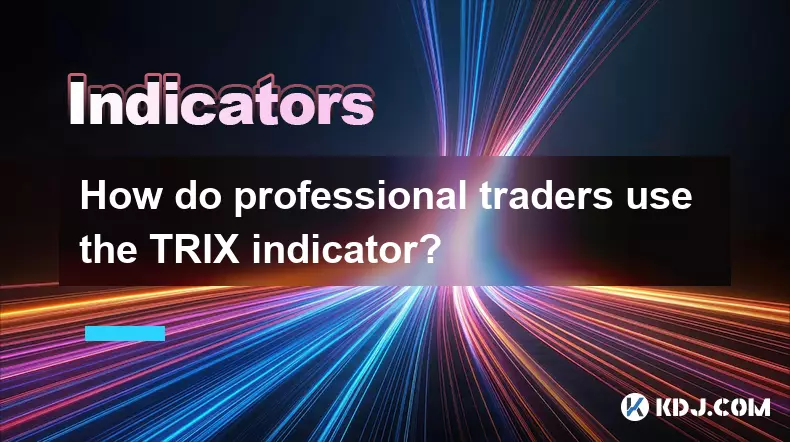
How do professional traders use the TRIX indicator?
Nov 06,2025 at 04:40pm
Understanding the TRIX Indicator in Crypto TradingThe TRIX (Triple Exponential Average) indicator is a momentum oscillator used by professional trader...
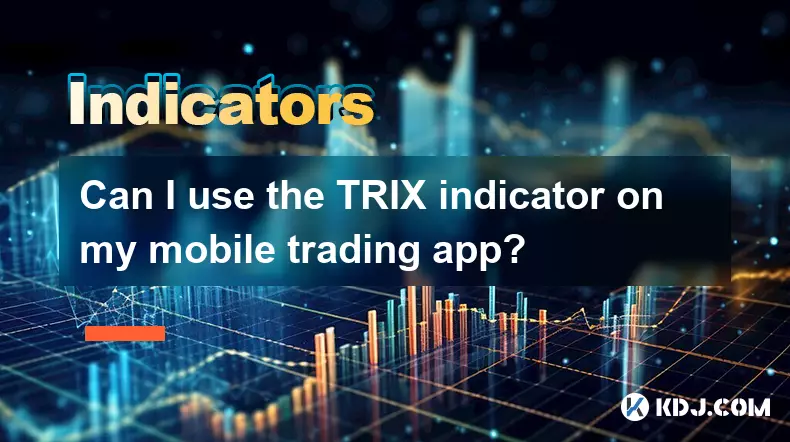
Can I use the TRIX indicator on my mobile trading app?
Nov 07,2025 at 07:40pm
The TRIX indicator, a momentum oscillator designed to filter out short-term fluctuations and highlight long-term trends, has become increasingly popul...
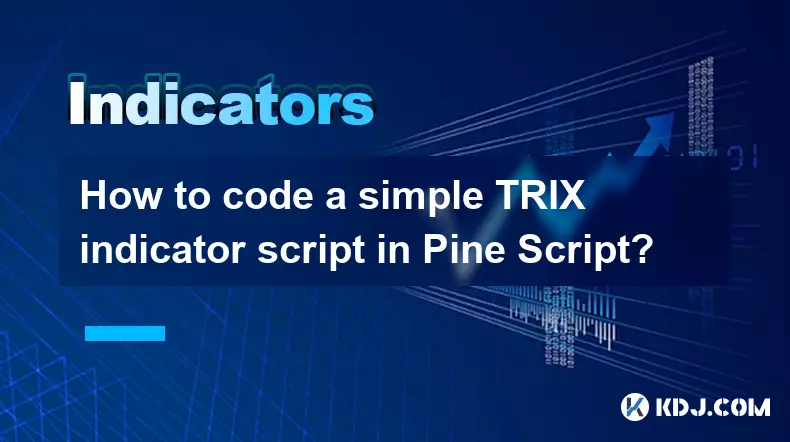
How to code a simple TRIX indicator script in Pine Script?
Nov 07,2025 at 06:20am
How to Code a Simple TRIX Indicator in Pine Script The TRIX (Triple Exponential Moving Average) indicator is widely used in cryptocurrency trading to ...
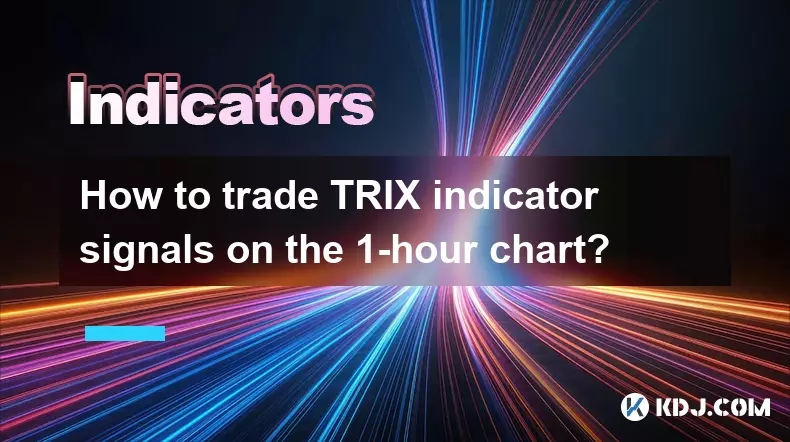
How to trade TRIX indicator signals on the 1-hour chart?
Nov 07,2025 at 05:39am
Bitcoin's Role in Decentralized Finance1. Bitcoin remains the cornerstone of decentralized finance, serving as a benchmark for value and security acro...
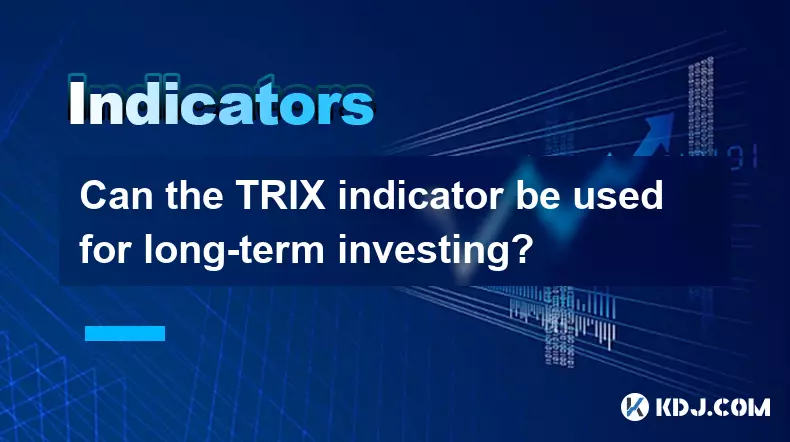
Can the TRIX indicator be used for long-term investing?
Nov 06,2025 at 02:19pm
Understanding the TRIX Indicator in Cryptocurrency Markets1. The TRIX (Triple Exponential Average) indicator is a momentum oscillator designed to filt...
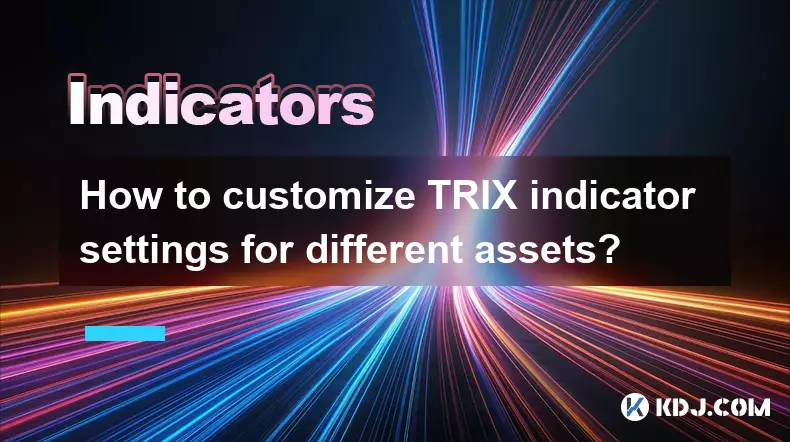
How to customize TRIX indicator settings for different assets?
Nov 06,2025 at 03:39pm
Understanding the TRIX Indicator in Cryptocurrency Trading1. The TRIX (Triple Exponential Average) indicator is a momentum oscillator designed to filt...

How do professional traders use the TRIX indicator?
Nov 06,2025 at 04:40pm
Understanding the TRIX Indicator in Crypto TradingThe TRIX (Triple Exponential Average) indicator is a momentum oscillator used by professional trader...

Can I use the TRIX indicator on my mobile trading app?
Nov 07,2025 at 07:40pm
The TRIX indicator, a momentum oscillator designed to filter out short-term fluctuations and highlight long-term trends, has become increasingly popul...

How to code a simple TRIX indicator script in Pine Script?
Nov 07,2025 at 06:20am
How to Code a Simple TRIX Indicator in Pine Script The TRIX (Triple Exponential Moving Average) indicator is widely used in cryptocurrency trading to ...

How to trade TRIX indicator signals on the 1-hour chart?
Nov 07,2025 at 05:39am
Bitcoin's Role in Decentralized Finance1. Bitcoin remains the cornerstone of decentralized finance, serving as a benchmark for value and security acro...

Can the TRIX indicator be used for long-term investing?
Nov 06,2025 at 02:19pm
Understanding the TRIX Indicator in Cryptocurrency Markets1. The TRIX (Triple Exponential Average) indicator is a momentum oscillator designed to filt...

How to customize TRIX indicator settings for different assets?
Nov 06,2025 at 03:39pm
Understanding the TRIX Indicator in Cryptocurrency Trading1. The TRIX (Triple Exponential Average) indicator is a momentum oscillator designed to filt...
See all articles





















![The Graph Price Prediction [GRT Crypto Price News Today] The Graph Price Prediction [GRT Crypto Price News Today]](/uploads/2025/11/07/cryptocurrencies-news/videos/690d4df44fe69_image_500_375.webp)



















































